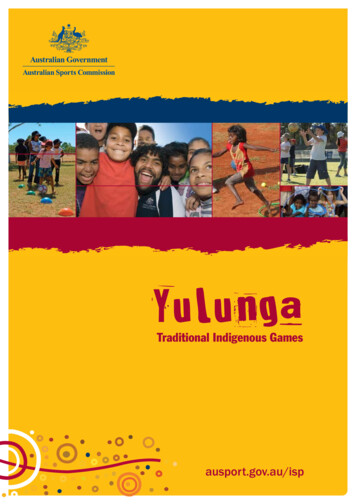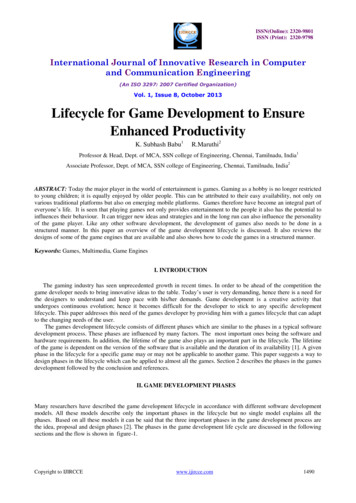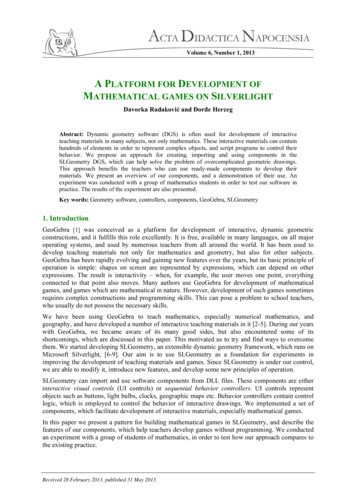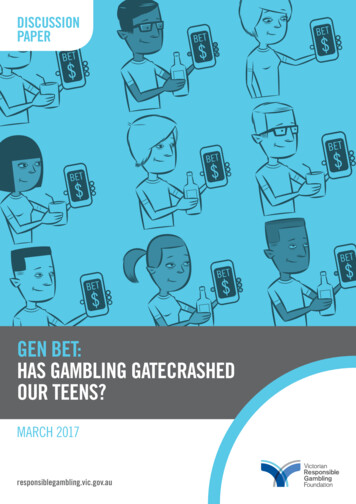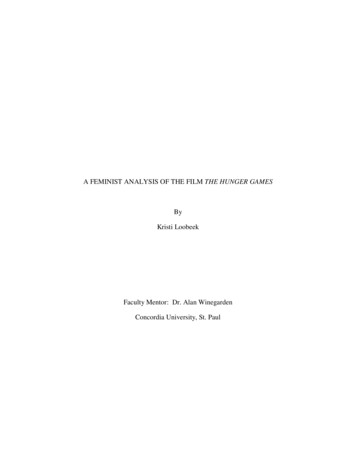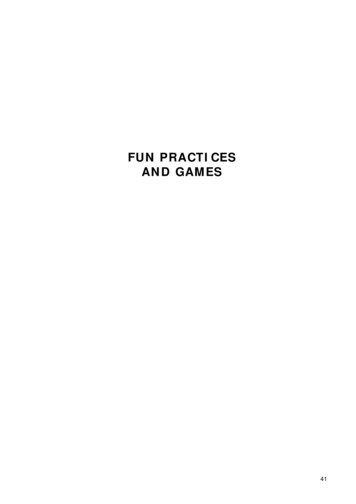
Transcription
FUN PRACTICESAND GAMES41
FUN PRACTICES AND GAMESThis section includes a number of fun games in which children candevelop and practise their body skill in moving and their skill inusing their rackets. The teacher can devise others.Games to develop racket skill.1. Individual rally game.Each player has a racket and shuttle.The aim of the game is to keep hitting the shuttle and count thenumber of hits. The players try to improve on their best score eachtime. See Plate 8.2. Hitting the ceiling.The players try to hit the ceiling using a forehand grip and then abackhand grip. Count the best score when using each grip.3. Target games.(a) Hoops.The player stands behind the line and tries to serve the shuttle intothe hoop. Two points are gained in the inner hoop and 1 point inthe outer hoop. The game ends when one player reaches 10points.Note: Chalk circles may be drawn on the floor or on the wall.Racket head covers also may be used see Plate 9.(b) Shuttle in the Bucket.The player stands behind the line but this time tries to hit theshuttle into a bucket, basket or bowl. One point is gained on eachsuccessful attempt. The game ends when one player has gained 5points. See Plate 10.42
43
44
45
(c) Distance.The players stand behind the line. The intention is to see whichplayer can hit the shuttle the furthest out of fiVE attempts.Game 1. The players use an underarm stroke - the serve action.Game 2. The players use an overhead stroke - the clear. Ir thisgame one player tosses the shuttle up from the side for the otherto hit it from overhead.4. Relay Games.The players stand in teams behind the line.One player from each team has to race to the far line andreturn while hitting the shuttle up on the racket. If the shuttlefalls to the ground the player must stop, pick it up and startfrom that place.When the player crosses the line the next player goes. The firstteam to finish is the winner.5. Catch-out Game.The players stand on the outer lines of the court spaced outaround the court. One player rallies alone inside the court andthen hits the shuttle high and calls a name/number.The player whose name/number is called must run and hit theshuttle up before it touches the ground. That player then ralliesalone until he/she calls a name. If the player does not get to theshuttle before it hits the ground then that player is OUT. Thegame continues until one or two players are left in.MOVEMENT GAMESBadminton is a game which provides scope for a variety ofmovement. The player has to start and stop quickly, run andsprint, change direction, stretch, twist and turn, jump and land.All the sorts of movement that children enjoy.Typical playground games offer the opportunity to developchildren's skill in moving and can be used both as a warm up inthe lessons and to develop skill in moving.46
1. Starting and Stopping games.Statues. One child is the Stopper.The children run inside the court until the Stopper shouts STOP! Thechildren must stop still immediately in statue like form with no partmoving. Any child who is caught moving is OUT. The game endswhen everyone is out.Comment: A game for balance and control.2. Dodging games.These are good games for changing direction and developing agility.(a) One child is HE. The players run inside the court chased by HE.The players must stay within the court boundary lines. If HE touches aplayer then that player becomes HE and the game continues.(b) Two children are HE. When another child is touched he/she muststand still until touched ( released') by another player.(c) One child is HE. When another child is touched he/she is OUT. Thegame ends when all the children are OUT.Comment: A game for four or five players.(d) Shadows: The children stand with a partner. One player has to tryto lose the shadow (the other player) by the time the teachercalls STOP.3. Hopping games.Good games for balance, control and agility.(a) Cross the courtThe players start behind the line on one side of the court. One player isHE in the centre. The idea of the game is for the players to hop across thecourt without being knocked onto two feet by HE. All the players,including HE must hop on one leg with their arms tightly folded. Playerswho are knocked onto two feet will be OUT.A variation is for OUT players to assist the HE player.(b) King of the Court.All the players hop inside the court space with their arms folded. Theidea of the game is for each player to try to knock other players ontotwo feet. The player who is left is King of the Court.47
(c) Hopping relay race.The players form teams with four players in a team numbered from1 to 4. The players line up behind the court side line in their teamsready to race against each other. The first player in each team musthop across the court, touch the side line and hop back on the otherleg. The next player goes when the first player returns across theline. The game ends when all the players have had a turn. The firstteam to finish are the winners.4. Games for speed.(a) Shuttle race.The players are divided up into two or three teams of equal numbers.Four shuttles are placed on marks spaced out down the hall about 3metres apart. See Fig 6. The first player in each team runs andcollects all the shuttles before running back to give them to thesecond player who runs and places them all back in position again.No. 3 collects and No. 4 deposits and so on. Each shuttle must beplaced accurately on the mark or the player must go back and do so.The winning team is the first to complete the course accurately.Comment: This race is suitable for younger children, e.g. 7/8 yearolds.48
(b) Shuttle Race.The course is laid out as above. This time each player has topick up a shuttle and run back with it before going to collect thenext shuttle. When all four shuttles have been collected thesecond player puts each one back in position one at a time.Comment: This race is more suitable for the older children.There are numerous games similar to these all of which areenjoyable and suitable for developing skill in moving as well asbeing an excellent form of exercise for children. The teacher candevise more of these games and use them as a warm up or afun game during the lesson.49
Count the best score when using each grip. 3. Target games. (a) Hoops. The player stands behind the line and tries to serve the shuttle into the hoop. Two points are gained in the inner hoop and 1 point in the outer hoop. The game ends when one player reaches 10 points. Note: Chalk circles may be drawn on the floor or on the wall. .

